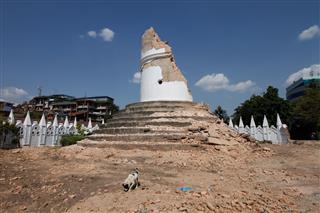
Hurricane Rita was the fourth-most intense hurricane ever recorded in the Atlantic, and the ninth costliest to affect the U.S. The news of Hurricane Rita less than a month after Hurricane Katrina triggered a massive evacuation in the states of Texas and Louisiana. This ScienceStruck article brings you more facts that you didn’t know about it.
Hurricanes Katrina and Rita may have been responsible for half the number of recorded stillbirths in the areas that were affected the most.
Hurricanes are tropical cyclones characterized by low-pressure centers and numerous thunderstorms. They occur between the months of June and November in the Northern Hemisphere, and between December and May in the Southern Hemisphere. They usually observed along the doldrums of the equator and tropical regions. The Atlantic has always been a region known for tropical cyclones.
The 2005 Atlantic hurricane season can very well be called a historic season. There were five major hurricanes recorded at that time; Dennis, Emily, Katrina, Rita, and Wilma. Hurricane Rita, was one of the deadliest of all. It was the 17th named hurricane, 5th largest, and 3rd category-5 hurricane of the Atlantic hurricane season in 2005. It intensified from category-2 to category-5 in just about 24 hours.
More Information About Hurricane Rita
- Hurricane Rita was formed on 17th September, 2005, and dissipated on 24th September, 2005.
- It was not only the strongest hurricane of 2005, but also the most intense tropical cyclone ever recorded in the Gulf of Mexico.
- It began as a mere tropical depression on the Turks and Caicos Islands. It developed in the same area as that of Hurricane Katrina, i.e., South Florida and Florida Keys.
- It intensified because it was passing through the warm waters of Loop Current (similar to Katrina). Within a few hours, it became the strongest hurricane of 2005.
- Winds as high as 180 mph were recorded, and the pressure was as low as 895 mbar. This placed it ahead of Hurricane Katrina (902 mbar) and Hurricane Allen (899 mbar), which was the third-strongest hurricane in the Atlantic region.
- Lt. Col. Warren Madden, a hurricane hunter and meteorologist with The Weather Channel, commented on Rita ― “The strongest storm I have ever been in.”
- Fortunately, it lost strength and intensity and made landfall as a category-3 hurricane between Sabine Pass, Texas, and Johnson Bayou, Louisiana.
- The Mayor of New Orleans, Ray Nagin, had ordered re-opening of the city on 19th September, 2005, but as Rita developed, the re-opening was canceled and a re-evacuation was ordered on 21st September, 2005.
- In Texas, the situation was the worst. The transport department was not prepared for such a large evacuation. As a result, there were huge traffic snarls. The traffic did not ease for 48 hours. Many motorists ran out of gas; there was a huge shortage of fuel, food, and water. More than 3 million residents were evacuated before the storm, making it the largest evacuation in the history of the U.S.
- Due to the evacuation, Johnson Space Center in Houston handed over the control of the International Space Station to their Russian counterparts.
- The places which were damaged by Katrina, were now again severely damaged by Rita. It became the 9th costliest hurricane in the U.S, with damages amounting to around USD10 billion.
- In Cameron Parish, communities like Cameron, Holly Beach, Creole, and Grand Chenier were extensively destroyed. In Calcasieu Parish, communities like Moss Bluff, Sulphur, Westlake, Lake Charles, and Vinton suffered widespread damage.
- It also produced 19 tornadoes in Arkansas and Mississippi, killing four people. One unusual thing about the tornadoes were that they were moving in the northwest direction due to Rita; while most tornadoes move in the northeast direction.
- There was lack of coordination, storm planning, and preparation. The hurricane caused 120 deaths, out of which only seven were caused directly because of Rita, and the rest of the casualties were a result of accidents caused during evacuation. Some of the deaths were due to food poisoning and illness.
- In Texas, a bus exploded killing 23 out of the 45 passengers that it was carrying. All of them were nursing home evacuees. Many were mobility-impaired that made their escape difficult or impossible.
- In the Gulf of Mexico, where Rita developed, there was a heavy concentration of oil refineries. The production which was already closed due to Katrina was further inaccessible.
- However, the oil industry escaped from huge damages, and there was only a minor increase in fuel prices.
- Due to the damages caused by Katrina and Rita, some 50,000 people were unemployed in the second-half of 2009.
- Because of the heavy destruction caused on the Gulf Coast, the name ‘Rita’ was called off in the spring of 2006, and it was decided not to use its name in the future. It was replaced by the name ‘Rina’ for the 2011 Atlantic hurricane season’s list.
Take necessary precautions and safety measures for protecting yourself and your family, even your pets! Stay alert, especially if you stay in hurricane-prone areas.










